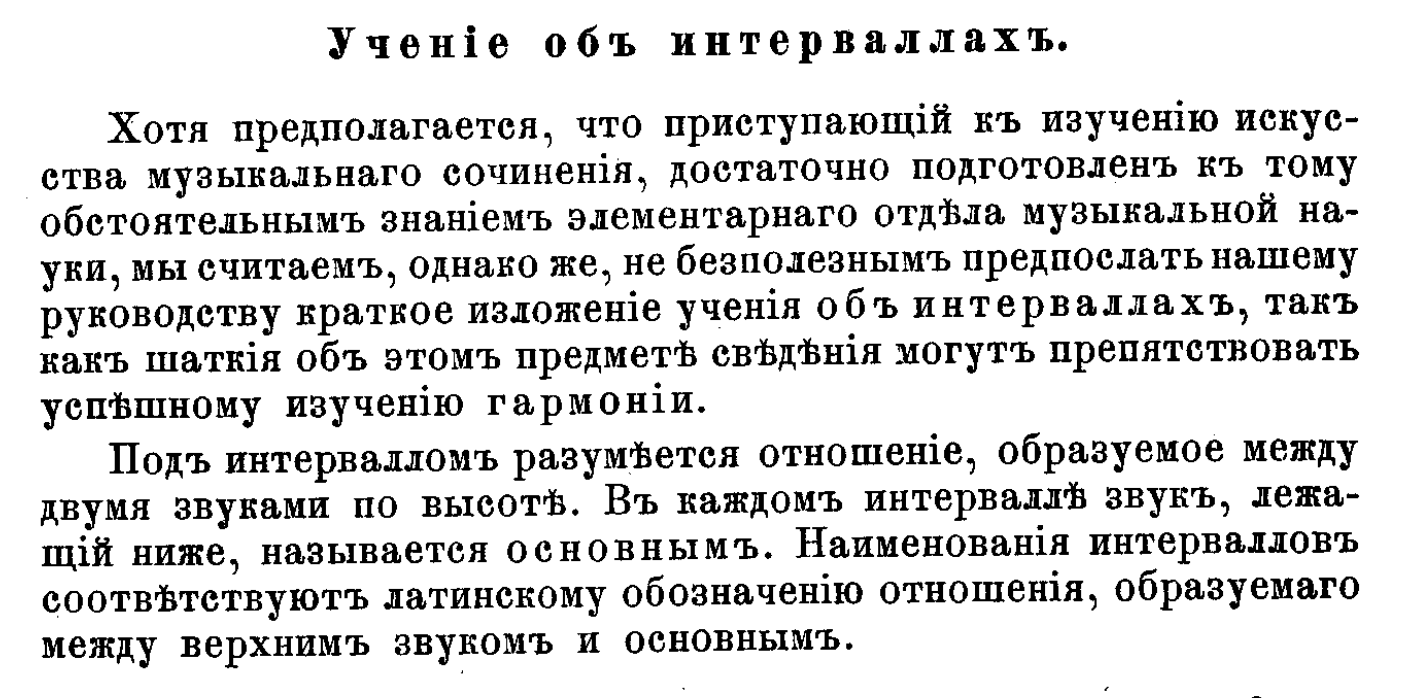This is a screenshot from Tchaikovsky's Harmony textbook:
(from page 5 of an 1897 edition — link to PDF)
And here is a transcription:
Ученіе объ интерваллахъ.
Хотя предполагается, что приступающій къ изученію искусства музыкальнаго сочиненія, достаточно подготовленъ къ тому обстоятельнымъ знаніемъ элементарнаго отдѣла музыкальной науки, мы считаемъ, однако же, не безполезнымъ предпослать нашему руководству краткое изложеніе ученія объ интерваллахъ, такъ какъ шаткія объ этомъ предметѣ свѣдѣнія могутъ препятствовать успѣшному изученію гармоніи.
Подъ интервалломъ разумѣется отношеніе, образуемое между двумя звуками по высотѣ. Въ каждомъ интерваллѣ звукъ, лежащій ниже, называется основнымъ. Наименованія интервалловъ соотвѣтствуютъ латинскому обозначенію отношенія, образуемаго между верхнимъ звукомъ и основнымъ.
Is this the pre-reform orthography? If someone is learning modern Russian, how difficult will it be to understand such paragraphs?
